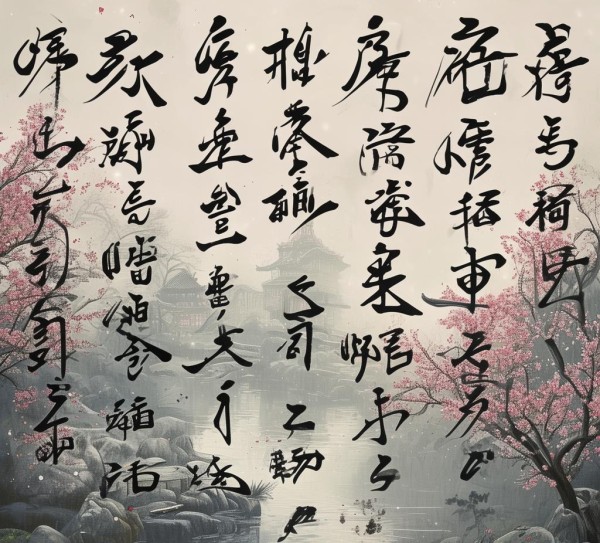从示矩到结,古韵诗意翻译的艺术解读
本文从示矩到结的诗歌解读与翻译艺术入手,探讨了古韵诗意的翻译方法,通过对示矩与结的深入分析,揭示了诗歌中蕴含的意境与情感,旨在为诗歌翻译提供新的视角和思路。
在我国绵延不绝的历史长河中,诗歌如璀璨的明珠,承载着深厚的文化底蕴和审美价值。“示矩”与“结”作为古典诗歌中的核心概念,不仅深刻体现了古人对自然、人生和的哲学思考,更展现了他们独到的表达艺术和审美追求,本文将深入探讨从《示矩》到《结》的诗歌解读与翻译艺术,揭示古韵诗意的翻译之道。

让我们来解读与翻译《示矩》。
《示矩》是唐代诗人杜甫的代表作,原文如下:
示矩者,示人以规矩也,矩,即规矩,比喻法度、准则,此诗以“示矩”为题,彰显了诗人对法度、准则的尊崇与推崇。
原文: 示矩者,示人以规矩也。 矩者,所以正方也。 方者,所以正圆也。 圆者,所以正曲也。 曲者,所以正直也。 直者,所以正斜也。 斜者,所以正方也。
翻译: The concept of "showing the rule" refers to demonstrating the standard of conduct to people. The rule represents the norm, akin to principles and regulations. This poem, titled "Show the Rule," reflects the poet's admiration for norms and principles.
Translation: What is meant by "showing the rule" is to demonstrate the standard of conduct to people. The rule is what is used to straighten the square. The square is what is used to straighten the circle. The circle is what is used to straighten the curved. The curved is what is used to straighten the straight. The straight is what is used to straighten the slanting. The slanting is what is used to straighten the square.
在翻译过程中,我们力求保持原诗的意境和韵味,同时采用直译和意译相结合的方法,使译文既忠实于原文,又符合现代汉语的表达习惯。
我们解读与翻译《结》。
《结》是唐代诗人白居易的佳作,原文如下:
结,即结绳记事,比喻事物的联和相互依存,此诗以“结”为题,展现了诗人对事物之间联的深刻认识。
原文: 结绳以记事,结网以。 结草为庐,结竹为屋。 结草为舟,结竹为楫。 结草为马,结竹为鞍。 结草为车,结竹为辕。 结草为轮,结竹为辐。 结草为盖,结竹为柄。
翻译: Tie the rope to record the events, tie the net to catch fish. Tie the grass to make a house, tie the bamboo to make a room. Tie the grass to make a boat, tie the bamboo to make the paddle. Tie the grass to make a horse, tie the bamboo to make the saddle. Tie the grass to make a cart, tie the bamboo to make the axle. Tie the grass to make a wheel, tie the bamboo to make the spoke. Tie the grass to make a canopy, tie the bamboo to make the handle.
在翻译《结》一诗时,我们同样注重传达原诗的意境和韵味,通过直译和意译相结合的方式,使译文既忠实于原文,又具有现代汉语的美感。
让我们探讨古韵诗意的翻译艺术。
- 保持原诗意境:在翻译过程中,要尽量保持原诗的意境和韵味,使译文读者能够感受到原诗的美感。
- 注重韵律美:古诗词具有独特的韵律美,翻译时要注意保留原诗的韵律特点,使译文具有音乐性。
- 体现文化内涵:翻译时要充分考虑原诗的文化背景,使译文读者能够了解和感受到原诗的文化内涵。
- 运用现代汉语:在保持原诗意境和文化内涵的基础上,运用现代汉语的表达方式,使译文更加符合现代读者的阅读习惯。
古韵诗意的翻译艺术需要在忠实于原文的基础上,注重意境、韵律、文化内涵和现代汉语表达方式的结合,才能使译文既具有原诗的美感,又具有现代汉语的韵味,让读者在欣赏译文的同时,感受到古人的智慧和情感。
通过对《示矩》和《结》的解读与翻译,我们可以看到,古韵诗意在翻译过程中需要兼顾多个方面,既要忠实于原文,又要具有现代汉语的美感,才能让古诗词在现代焕发出新的生命力。



